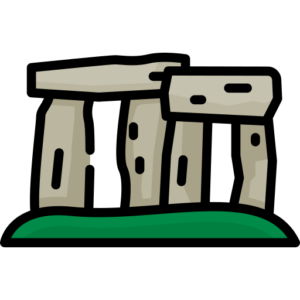Ḩamāh, Syria
Region: Ḩamāh, Syria is located in the Hamah Governorate
Geographic Coordinates: 35.133300, 36.750000
Temperature Range: 5.0°C to 35.0°C (41°F to 95°F)
Climate: Seasonal.
Population: 696863
Language: Arabic
Hamah, Also known as Hama, Is a city located in central Syria with a population of approximately 700, 000 people. It is situated on the banks of the Orontes River and has been inhabited since ancient times. The city has a rich history and is known for its beautiful architecture, Colorful bazaars, And warm hospitality. One of the most notable landmarks in Hamah is the Norias of Hama which are large wooden waterwheels that have been used to irrigate farmland for centuries. These wheels were once powered by the river’s current but are now mainly used for decorative purposes.
Visitors can take a stroll along the riverbank to see these impressive structures up close. Another must-see attraction in Hamah is the Citadel of Hama which dates back to at least Roman times but was mostly constructed during the Mamluk period in the 13th century. The citadel sits atop a hill overlooking the city and offers stunning views from its ramparts. Inside, Visitors can explore its various courtyards and towers while learning about its fascinating history. The Great Mosque of Hamah is another important religious site that should not be missed while visiting this Syrian city.
This mosque was built during Umayyad rule in Syria (661-750 AD) on top of an earlier Byzantine church and later expanded during Ottoman rule (1516-1918). Its beautiful courtyard features a fountain surrounded by palm trees and intricate stonework. In addition to these historical sites, There are also many vibrant markets or souks throughout Hamah where visitors can shop for traditional handicrafts like textiles and pottery or sample local cuisine like falafel or shawarma sandwiches. One popular market is Souq al-Buzuriyah which specializes in spices like cumin, Coriander, And saffron.
Despite its rich cultural heritage, Hamah has also suffered greatly during the Syrian civil war which began in 2011. Many of its historic buildings have been damaged or destroyed, And the city has seen an influx of refugees fleeing violence in other parts of Syria. Despite these challenges, The people of Hamah remain resilient and continue to welcome visitors with open arms. Hamah is a fascinating city with a rich history and culture that should not be missed by anyone traveling to Syria.
Visitors can explore ancient landmarks like the Norias of Hama or Citadel of Hama while also immersing themselves in local markets and cuisine. While recent conflict has taken a toll on the city’s infrastructure, It remains an important cultural center in Syria that deserves recognition for its beauty and resilience.


Important Landmarks
- Citadel of Ḩamāh
- Al-Nuri Mosque
- Norias of Hama
- Azem Palace
- Museum of Hama
- Al-Madrasa al-Uthmaniyah
- Great Mosque of Hama
- Mamluk Cemetery
- Church of St Elian
- Hamat Tiberias National Park

Primary Industries
- Agriculture
- Textile manufacturing
- Food processing
- Chemical production
- Tourism
The city is known for its production of:
- Cotton
- Textiles such as silk brocade
It also has a significant food processing industry with products such as:
- Olive oil
- Dried fruits
- Nuts
Chemical production includes:
- Pharmaceuticals
- Fertilizers
Tourism is an important source of income for the city due to its historical sites such as:
- The Citadel of Ḩamāh
- The Great Mosque of Ḩamāh
- The Battle of Hama in 1982 was a significant conflict that resulted in the deaths of thousands of people between the Syrian government and the Muslim Brotherhood.
- Ibn Taymiyyah, an Islamic scholar who lived in Hama during the 13th century, wrote many influential works on theology, philosophy, and law.
- Nur al-Din al-Zangi was a powerful Muslim ruler who controlled much of Syria during the 12th century and played a vital role in defending against Crusader attacks.
- Al-Mansur Qalawun conquered Hama in 1289 and incorporated it into his empire as an Egyptian sultan.
- Salah al-Din al-Ayyubi (Saladin) captured Hama from Crusaders in 1188 as a famous Muslim military leader.
- The Great Mosque of Hama is an ancient mosque that dates back to Umayyad times and is one of Syria’s most important religious sites.
- The Orontes River runs through Hama and has been crucial to its history as a center for trade, agriculture, and transportation.
- The Roman Bridge of Hama is an impressive architectural wonder built by Romans over the Orontes River that still stands today as one of Syria’s most notable landmarks.
- Mamluk architecture can be seen throughout Ḩamāh with several examples such as Khān Jubb Adīn or Madrasa Al-Firdaws’ mosques or khans from this era scattered around town.
- Citadel of Aleppo
- Apamea Archaeological Site
- Azem Palace
- Al-Madrasa al-Uthmaniyah
- Nur al-Din Bimaristan
- The Great Mosque of Hama
- Mausoleum of Saladin
- Al-Adiliyah Mosque
- Abu Firas al-Hamdani Cultural Center
- The Annual Cherry Festival: Held every year in June, this festival celebrates the cherry harvest and features various activities such as music performances, food stalls, and traditional dances.
- Eid al-Fitr: This religious festival marks the end of Ramadan and is celebrated by Muslims throughout Syria with prayers, feasting, and gift-giving.
- Al-Nabi Saleh Mawlid: This is a major religious celebration held annually to commemorate the birth of Prophet Muhammad. It includes public gatherings for prayer and recitation of Quranic verses.
- Hamah Summer Festival: A month-long event held during July-August featuring cultural performances including music concerts by Syrian artists.
- International Film Festival: Held annually since 2010 at Dar Al-Assad for Culture & Arts Centre showcasing local films alongside international movies from different countries around the world.
- Kibbeh – a traditional Syrian dish made of minced meat and bulgur wheat.
- Fattoush – a salad made of mixed greens, tomatoes, cucumbers, onions, and pita bread.
- Shawarma – a Middle Eastern dish consisting of marinated meat (usually chicken or lamb) cooked on a spit and served with vegetables and sauce in pita bread.
- Falafel – deep-fried balls made from ground chickpeas or fava beans served with tahini sauce.
- Al-Mohamadi Restaurant
- Al-Sheikh Restaurant
- Al-Tawfiq Restaurant
- Abu Shaker Restaurant
- Al-Mamoura Park: A large park located in the center of the city with a lake, playgrounds, and picnic areas.
- Al-Qalaa Park: A historic park located on top of a hill overlooking the city with gardens and ancient ruins.
- Orontes River: The river that runs through Ḩamāh is a popular spot for boating, fishing, and picnicking along its banks.
- Tennis Courts: There are several tennis courts around the city for those interested in playing tennis.
- Football Stadiums: There are multiple football stadiums around Ḩamāh where locals gather to watch games or play themselves.

Noteable History

Museums and Things To See


Cultural Events
Please note that due to ongoing conflicts in Syria over recent years many public events may be canceled or postponed indefinitely until further notice for safety reasons.

Cuisine
Some popular restaurants in Ḩamāh that serve these dishes include:

Parks and Recreation
Note that due to ongoing conflict in Syria it is not safe to travel or engage in recreational activities there at this time.






